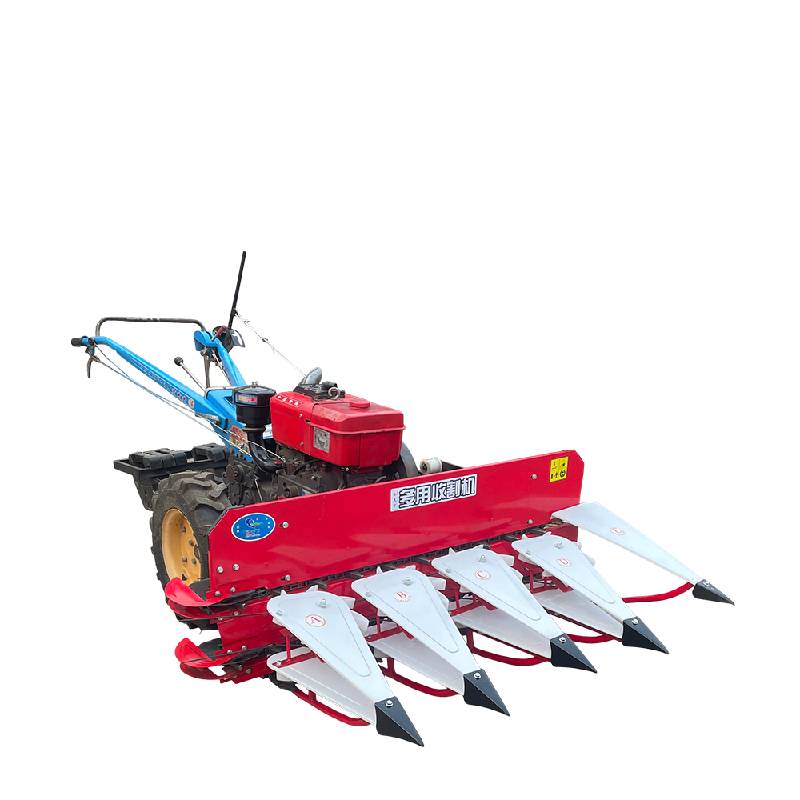Reaper Binder: Compact, Efficient Crop Cutting & Binding
Walking Tractor Mounted Reaper Head: field notes, specs, and who’s actually getting value
If you’ve been shopping for a reaper binder lately, you’ve probably noticed two things: prices are all over the place, and real specs are often buried in marketing fluff. I’ve spent time in Julu Industrial Park, Xingtai City, Hebei—where the Walking tractor mounted reaper head (model GS120C2) is built—and, to be honest, the factory-first details matter more than the brochure gloss.

What’s trending in compact harvesting
Smallholder mechanization is shifting toward modular attachments. Instead of a bulky combine, growers bolt a cutting head to an 8–12 hp walking tractor and get the job done in tight, wet, or terraced plots. It sounds simple, but the engineering is not—knife alloys, drive ratios, and vibration control decide whether a reaper binder pays back in one season or turns into shop art.
Product snapshot: GS120C2
Origin: Julu Industrial Park, Xingtai City, Hebei Province, China. The head couples to common two-wheel tractors via a flange kit. Many customers say it’s surprisingly forgiving in mixed wheat–barley stands, which tracks with the knife geometry I saw on the line.
| Parameter | GS120C2 (≈ values; real-world use may vary) |
|---|---|
| Cutting width | ≈ 1.2 m (1200 mm) |
| Recommended tractor power | 8–12 hp walking tractor |
| Stubble height | ≈ 30–100 mm adjustable |
| Knife material | 65Mn spring steel, heat-treated |
| Drive | Chain + pulley reduction, guarded |
| Dry weight | ≈ 110–135 kg (depending on kit) |
| Service life (major overhaul) | ≈ 800–1200 h with routine lubrication |
Materials, build, and testing
- Frame: mild steel with anti-rust phosphate + powder coat.
- Knives/guards: 65Mn blades, Mn13 wear plates at high-abrasion points.
- Process: laser cutting, CNC drilling, heat treatment, balance check, final alignment.
- Factory tests: 2 h no-load spin, 1 h loaded cut bench, vibration ≤ 4.5 m/s² at grips, sound pressure ≈ 82–85 dB(A) at operator ear (ISO methods).
- Standards referenced: ISO 4254-12 (harvester safety), ISO 11684 (safety signage); CE declaration available on request.
Where it works best
Rice paddies, small wheat plots, barley and oats on terraces, and mixed straw cutting for fodder. In muddy fields, operators often report fewer clogs when stubble is kept at ~60 mm. A reaper binder like this is also used for seed plots where precise low-loss cutting matters.
Field feedback and performance
From a cooperative in Shandong: average field capacity ≈ 0.25–0.35 ha/h in wheat, fuel burn around 0.8–1.1 L/h (10 hp tractor). Knife edge retention was “a full week before flip or swap,” which is quite decent in sandy loam.
Vendor comparison (condensed)
| Vendor | Lead time | Customization | Certifications | After-sales |
|---|---|---|---|---|
| HB Niuboshi (GS120C2) | ≈ 15–25 days | Row spacing, flange kits, paint | ISO 9001 factory; CE docs | 12-month warranty; spares stocked |
| Importer A (generic) | ≈ 35–50 days | Limited options | Mixed paperwork | 3–6 month limited; parts uncertain |
| Local fabricator | ≈ 10–20 days | High—custom builds | Varies; few formal certs | Good service, variable parts |
Customization tips
- Match the drive ratio to tractor RPM; over-speeding shortens knife life fast.
- Order hardened guards for sandy soils; it’s worth it.
- Ask for paddies kit (mud scrapers) if working in flooded rice.
Service and safety checklist
- Grease daily; chain tension check every 4–8 hours.
- Blade inspection every 10 hours; swap at visible rounding.
- Guard shields must meet ISO 4254-12 clearances; signage per ISO 11684.
Final thought: a solid reaper binder isn’t flashy—it’s well-balanced, cuts clean, and keeps fingers safe. The GS120C2 checks those boxes, and, actually, that’s what matters.
Authoritative citations
- ISO 4254-12: Agricultural machinery — Safety — Part 12: Forage and harvesting machinery.
- ISO 11684: Tractors, machinery for agriculture and forestry — Safety-related signs and hazard pictorials.
- FAO: Agricultural mechanization for smallholders — Operational guidelines and case studies (FAO, 2021).
- GB/T 14229: Agricultural machinery — Combine and reaper-binder terminology and testing methods (PRC standard).
Latest news
-
Mini Combine Harvester for Paddy – Compact, Efficient Rice Harvesting SolutionsNewsNov.24,2025
-
Mini Chain Harvester: Compact Forestry Solutions for Sustainable LoggingNewsNov.23,2025
-
Kartar Mini Harvester – Compact, Efficient Harvesting Machinery for Small FarmsNewsNov.23,2025
-
Compact Power: Elevate Your Farming with Harvesting Machine SmallNewsNov.22,2025
-
Discover the Power and Potential of Harvester Mini Combine Machines | Efficient Small-Scale HarvestingNewsNov.22,2025
-
Compact Harvester Machines: Small-Scale Agriculture’s Big AdvantageNewsNov.21,2025








